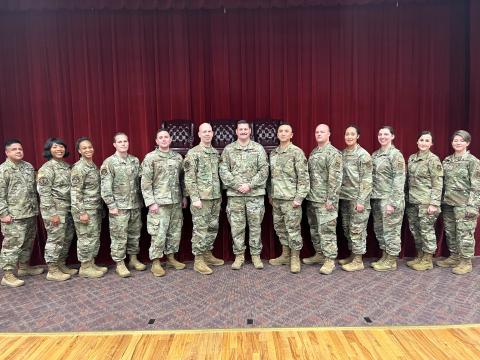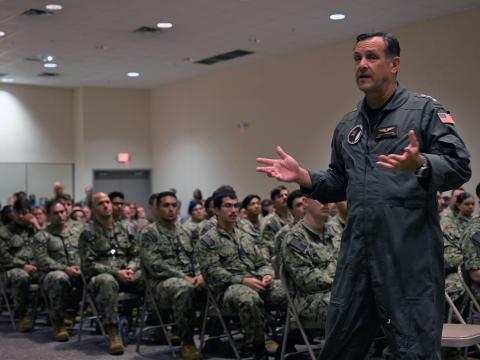Open Discussion Leads to Details and Answers
CHICAGO - Both federal and local emergency response leaders opened the first formal session of the National Conference on Emergency Communications by inviting attendees to share openly success stories as well as the challenges they face. More than 450 representatives from emergency response organizations are attending the conference, including personnel from the military as well as large and small U.S. communities and Guam, Hawaii, the United Kingdom and Canada.
CHICAGO - Both federal and local emergency response leaders opened the first formal session of the National Conference on Emergency Communications by inviting attendees to share openly their success stories as well as the challenges they face. More than 450 representatives from emergency response organizations are attending the conference, including personnel from the military as well as large and small U.S. communities and Guam, Hawaii, the United Kingdom and Canada.
Although technology was on everyone's mind, Raymond Orozco, director, Chicago Office of Emergency Management, emphasized that interoperability is about more than radios and computer systems. "We need to make sure that operations drive the technology and not the other way around," Orozco said. Theodore O'Keefe, deputy superintendent, Chicago Police Department, added that "sometimes interoperability can present daunting challenges for us, challenges that we face every day."
The primary focus of the two-hour afternoon session was the National Emergency Communications Plan (NECP). The plan was released in July 2008, and includes three goals for communications improvements during the next three years. The goals focus on establishing response-level communications within hours of an incident. According to Chris Essid, director, Office of Emergency Communications, DHS, implementation of the plan is going well. Of the 93 milestones that comprise the plan, nearly 20 already have been met.
Essid also emphasized that the NECP is not a federal plan but rather one that includes the input and ideas from first responder organizations throughout the United States and its territories. Consequently, it is up to all of these organizations to make the plan work, he said. Most importantly, the goal is to make the NECP more than just a document; it is meant to be a roadmap for the future and remain viable and current.
"The NECP will help us focus on priorities. These are not all of the priorities. I like to think of it as the first five to 10 miles of a marathon. You can't complete a marathon without the first five to 10 miles," Essid said. In addition, he emphasized, the activities outlined in the plan must be completed; the NECP is not just a book to put on the shelf.
Both DHS and the OEC are well aware of the economic challenges that cities and regions face; however, because missions must still be completed, they will simply have to be done more efficiently and effectively, Essid said. Grant programs have been restructured to meet some of these needs, he noted. Using social media tools also can help facilitate communications, he added.
After the initial presentations, Chris McGoff, discussion facilitator, stressed that the conference belongs to the attendees, made sure that everyone had a copy of the NECP and directed audience members at eight-person tables to discuss the plan. After introductions, they were to dig right in and converse about the plan, ask each other questions and determine if someone at the table had the answers. Those questions that the team could not answer were then answered "by the most knowledgeable person in the room" rather than designated panelists.
Attendees were invited to e-mail their questions to oec@hq.dhs.gov, and the e-mailed were then read aloud; many of the answers were provided by OEC leaders. Questions can continue to be sent to this e-mail address by conference attendees as well as emergency personnel unable to attend the event throughout the conference.



